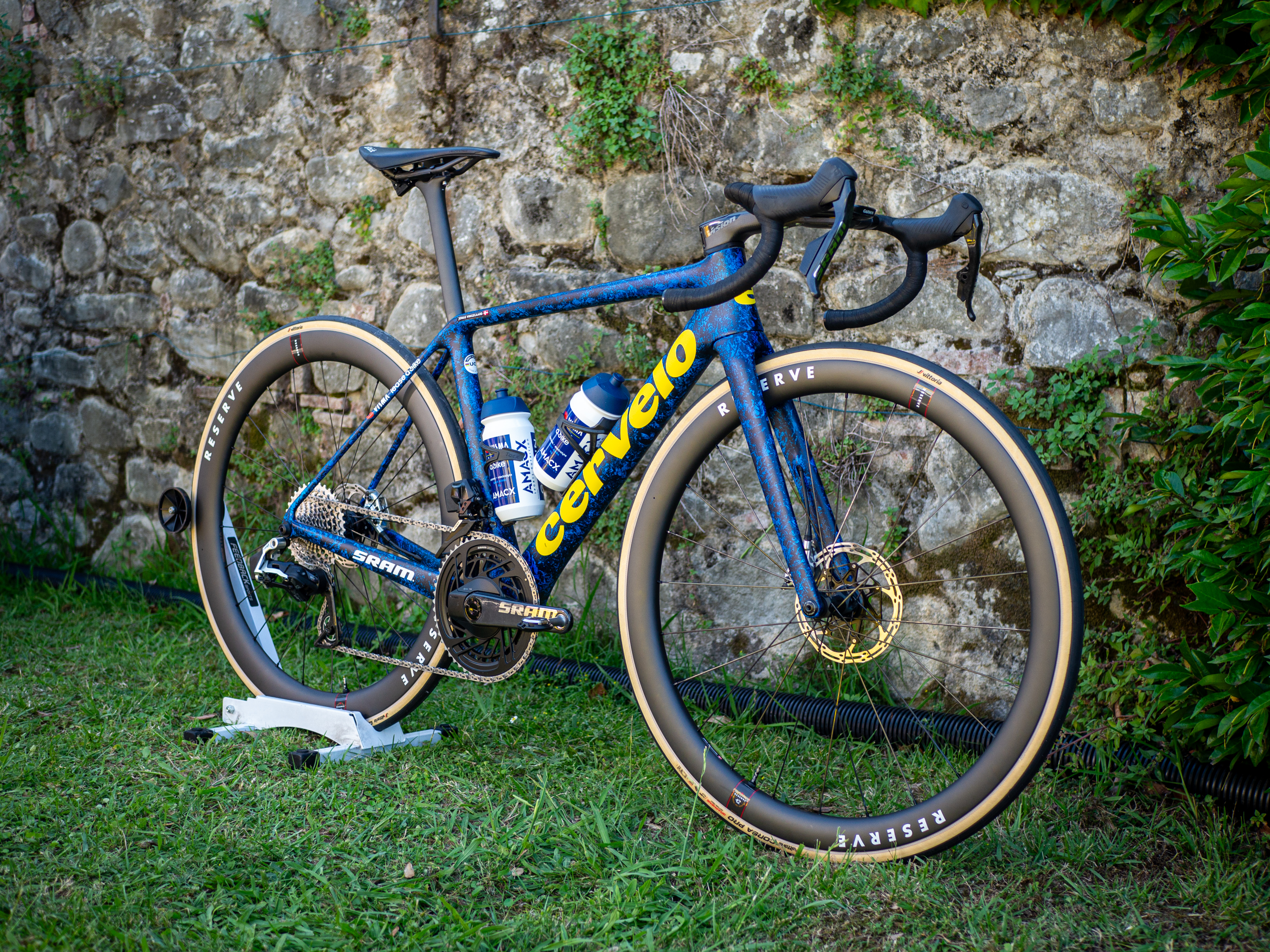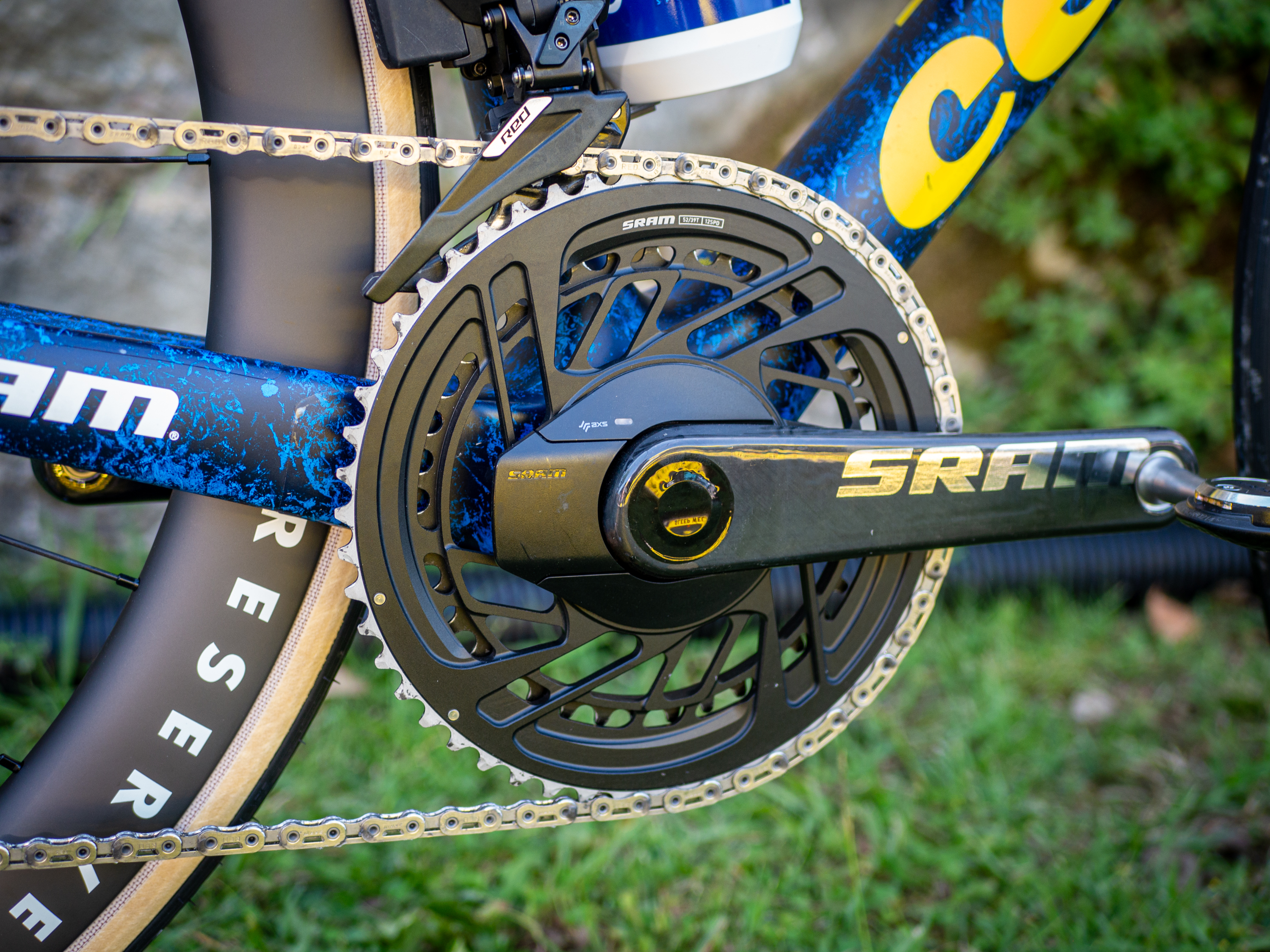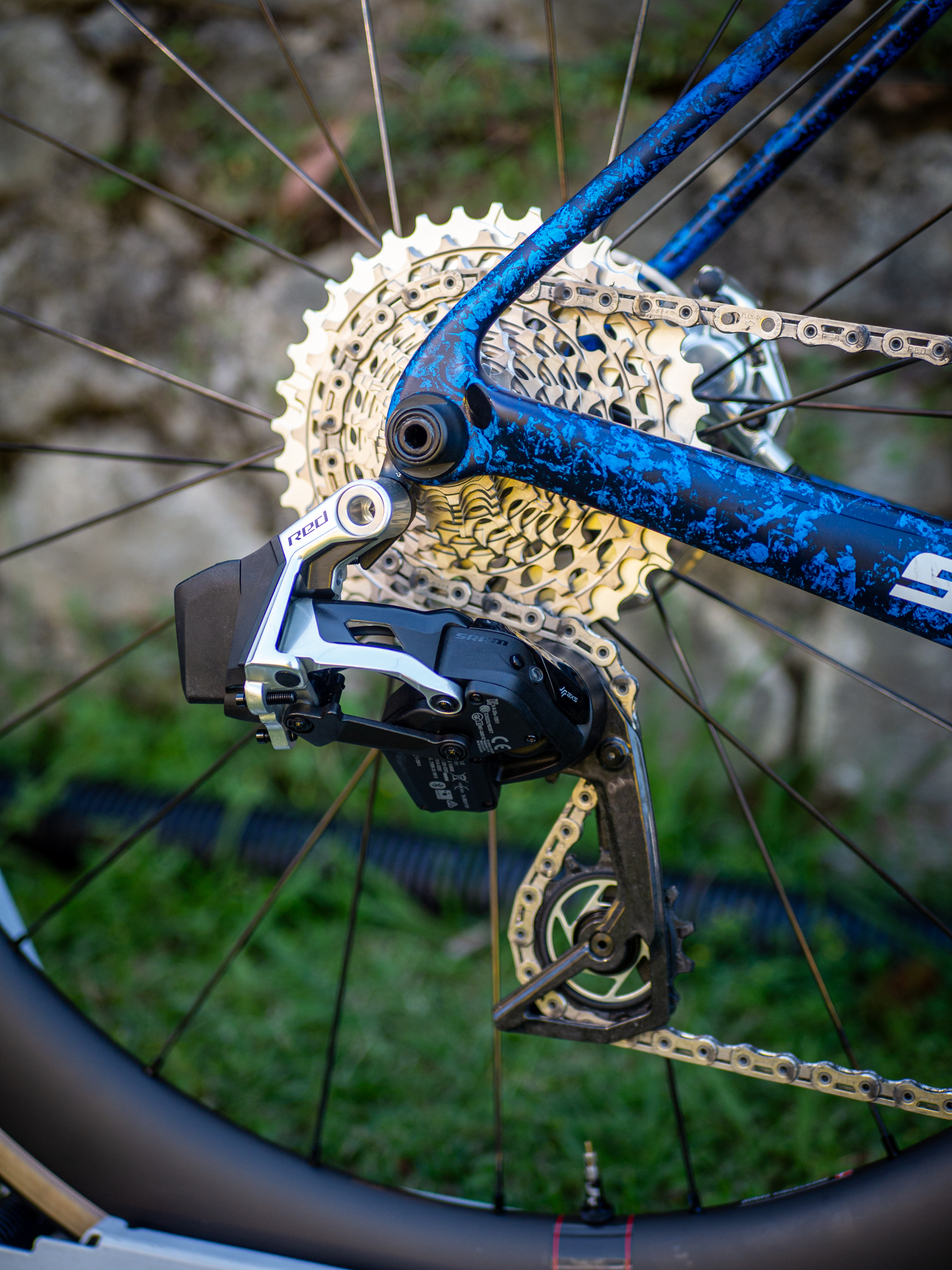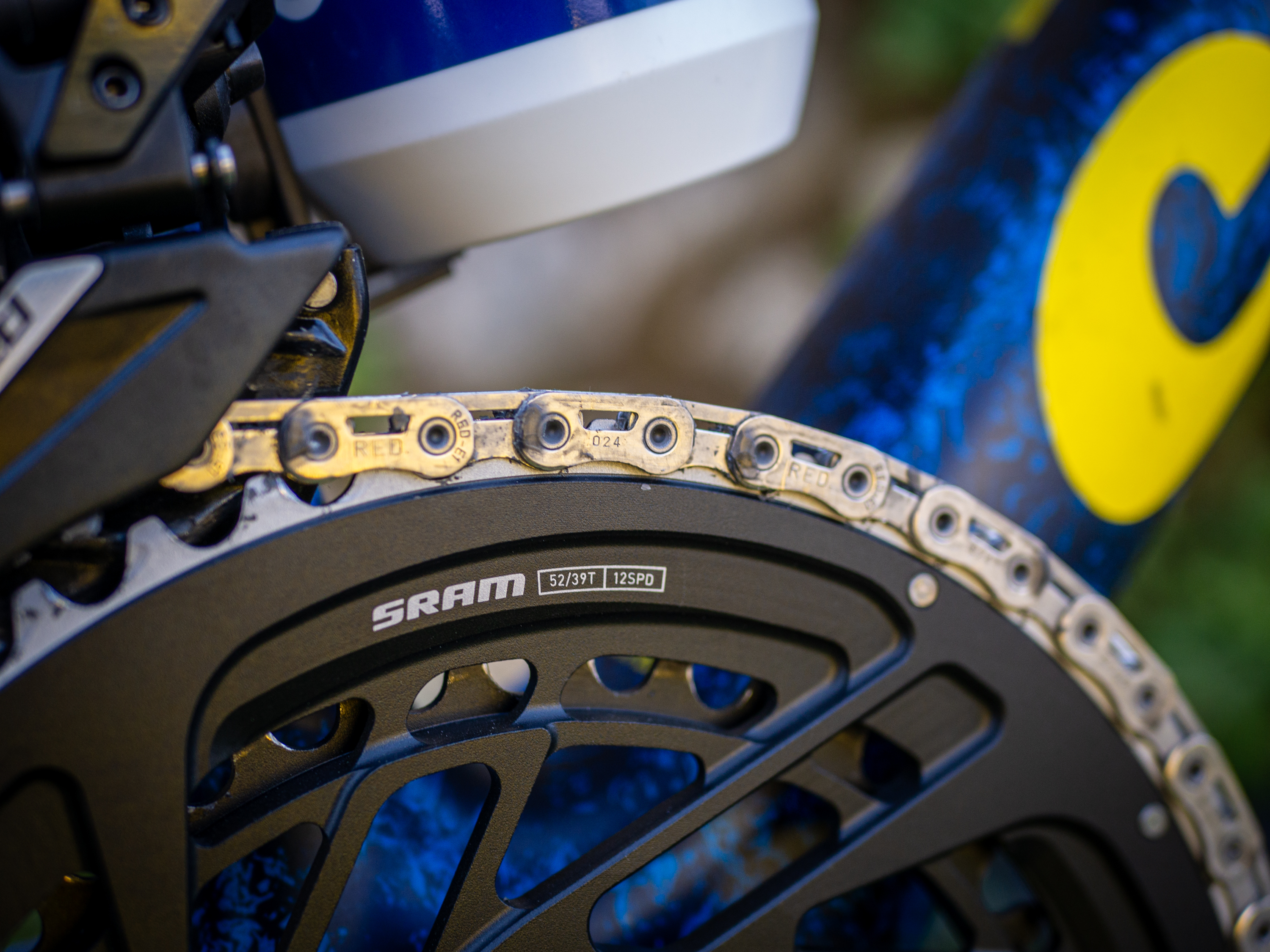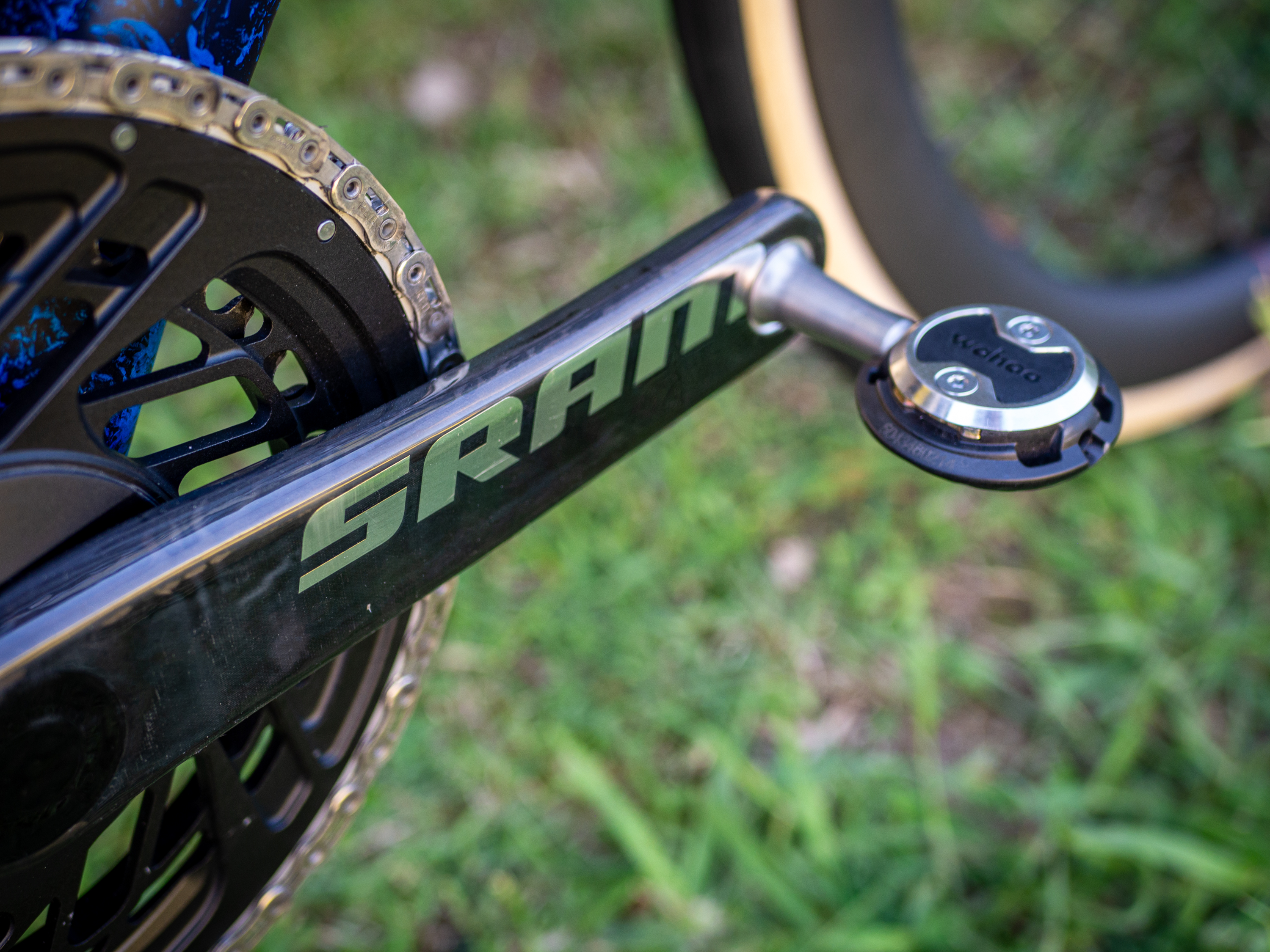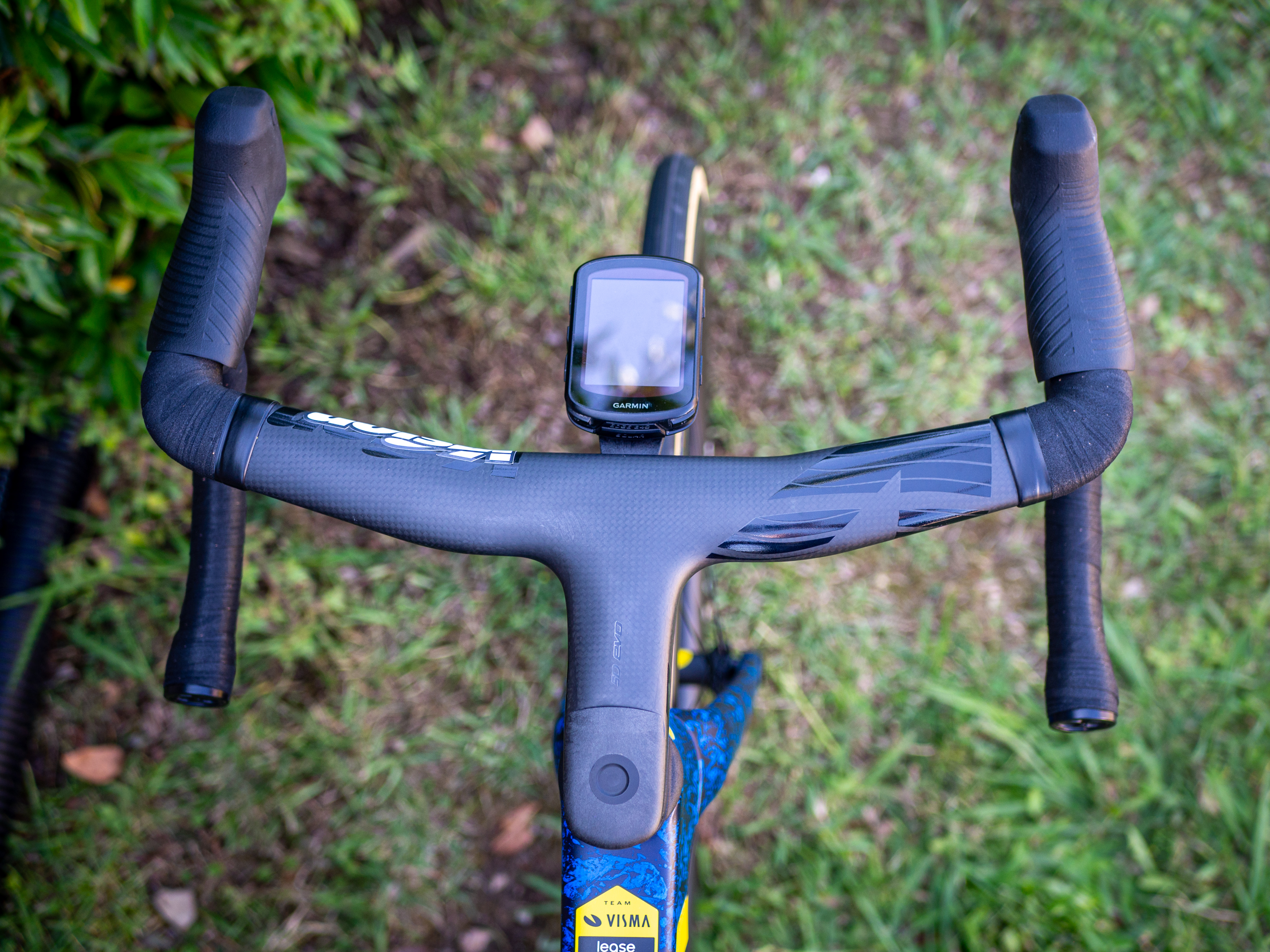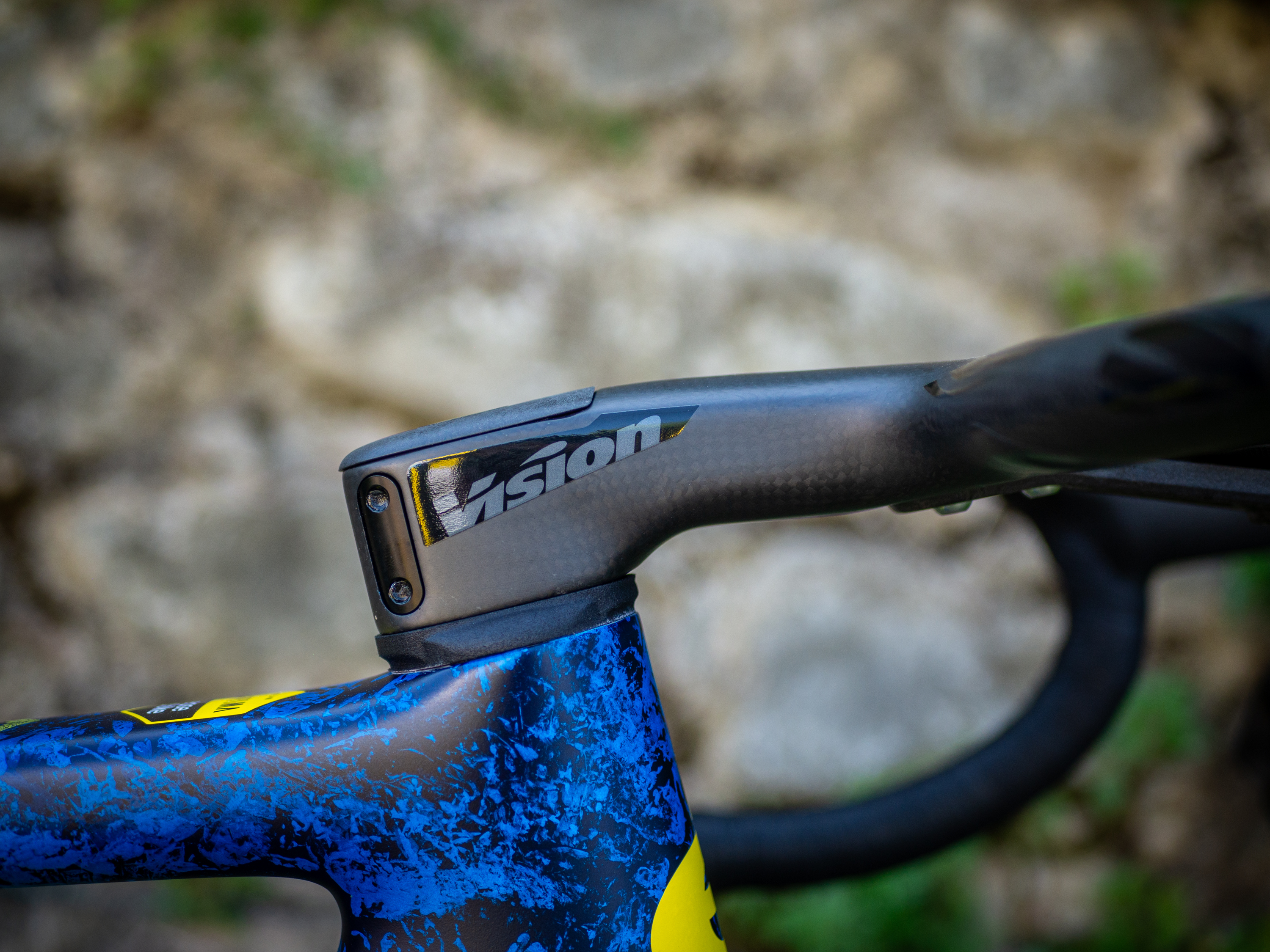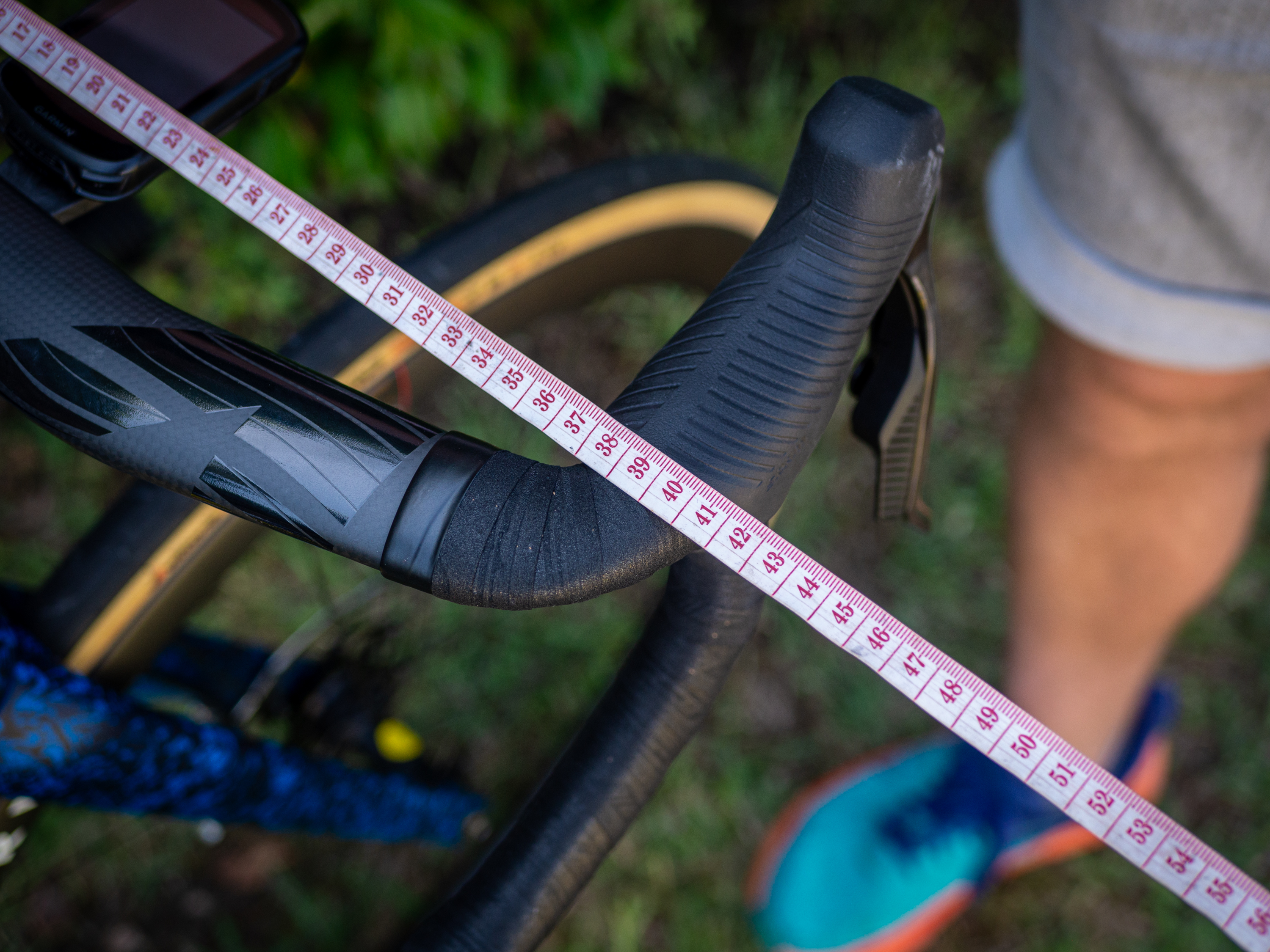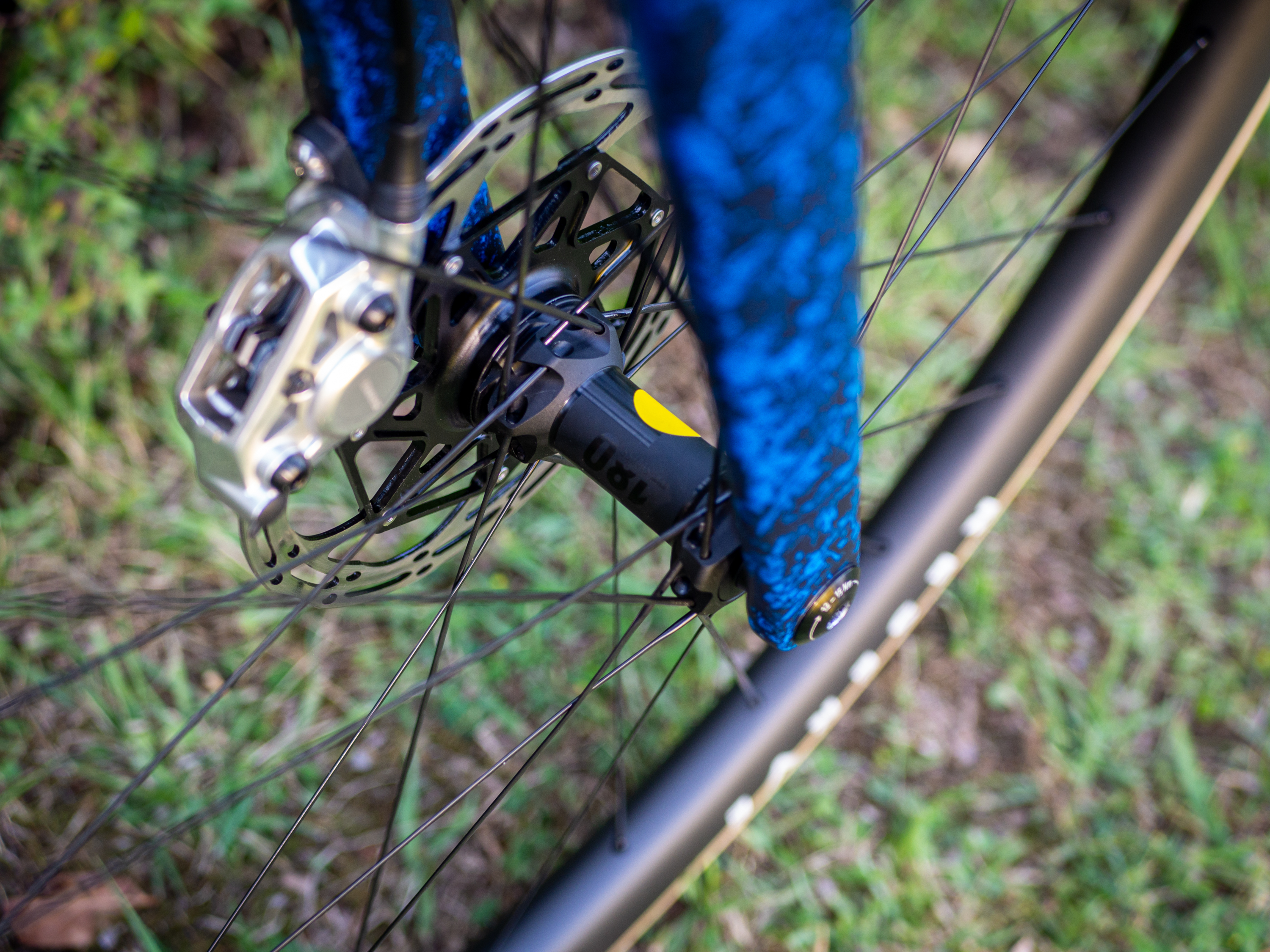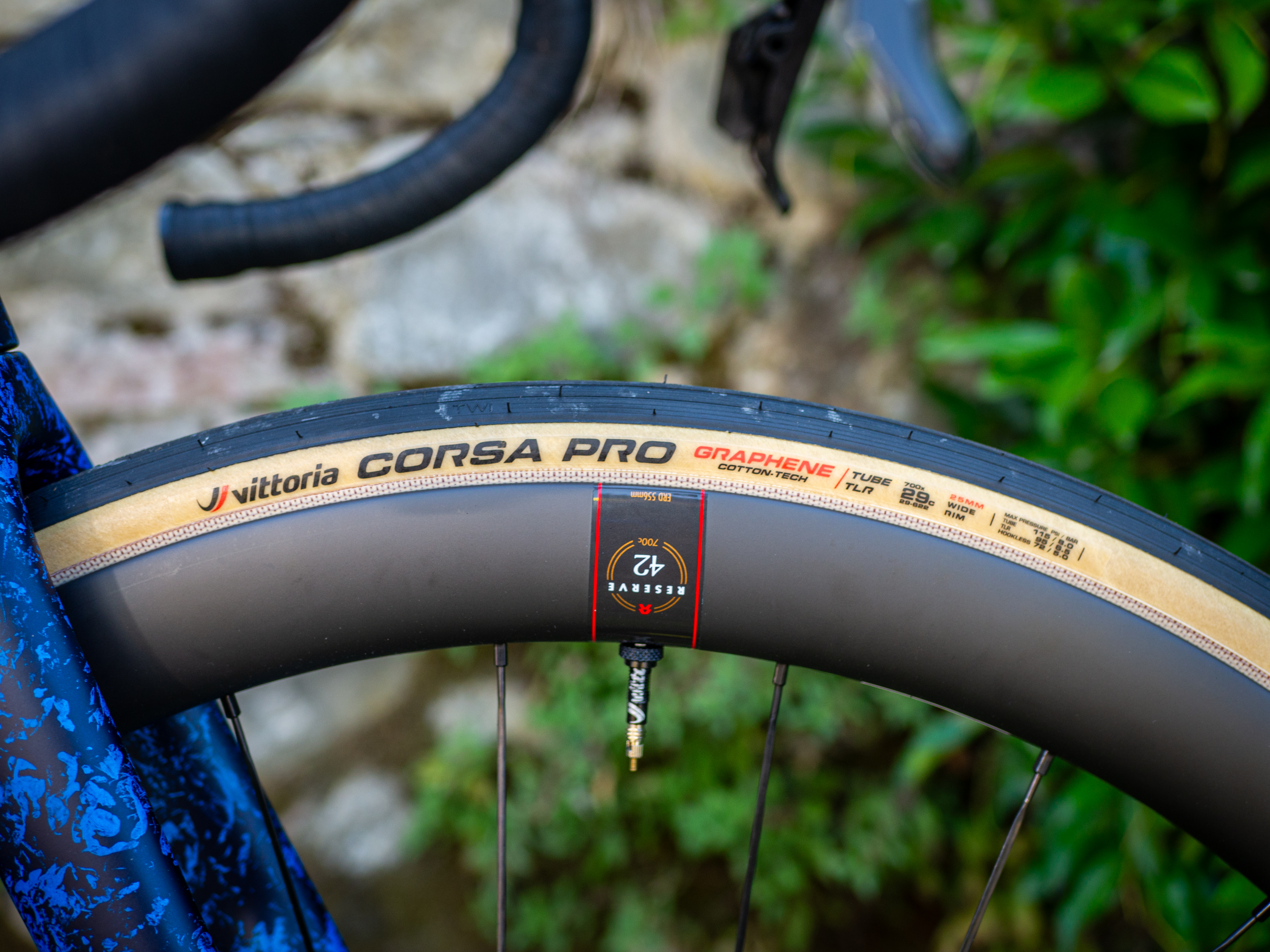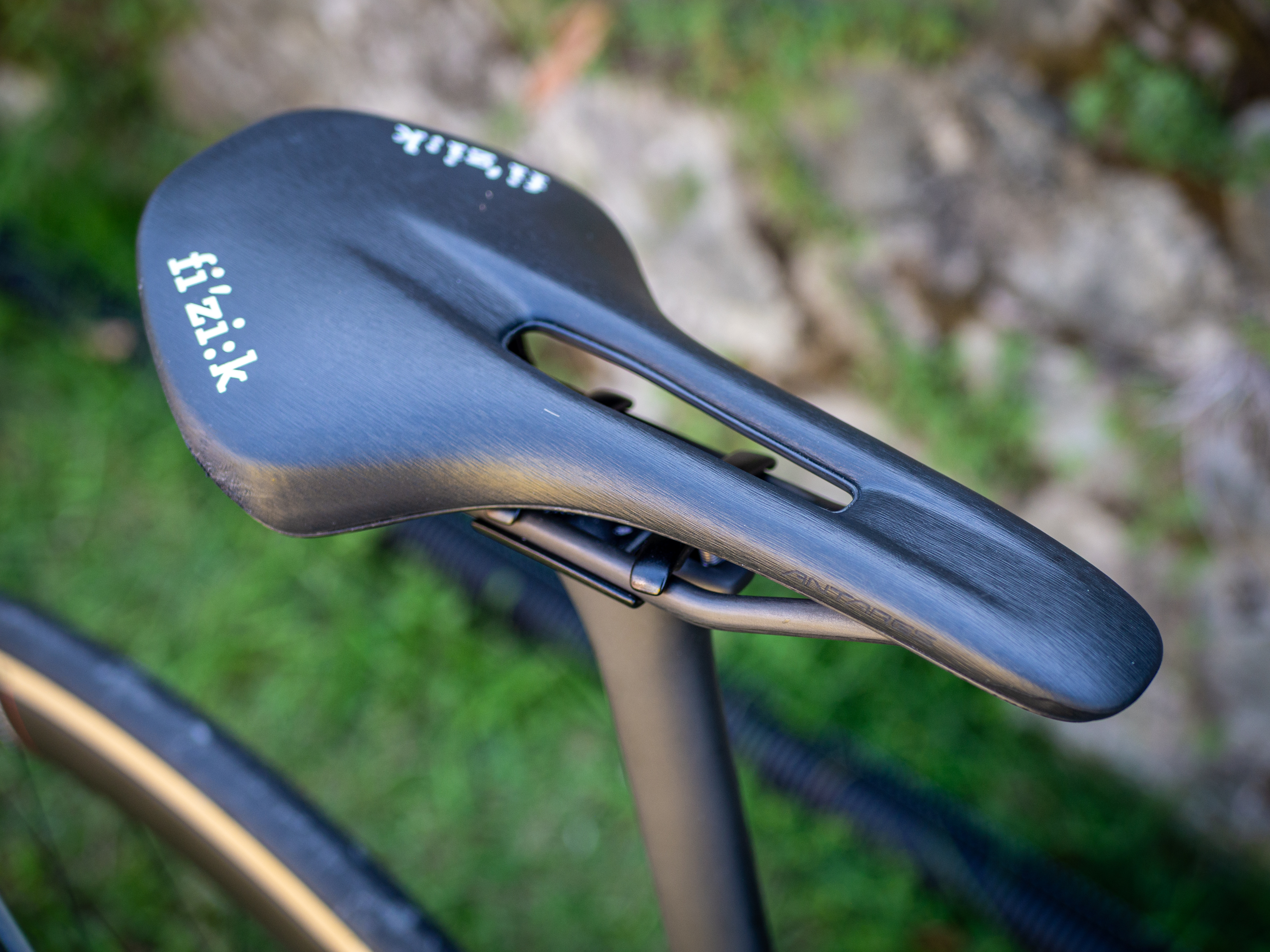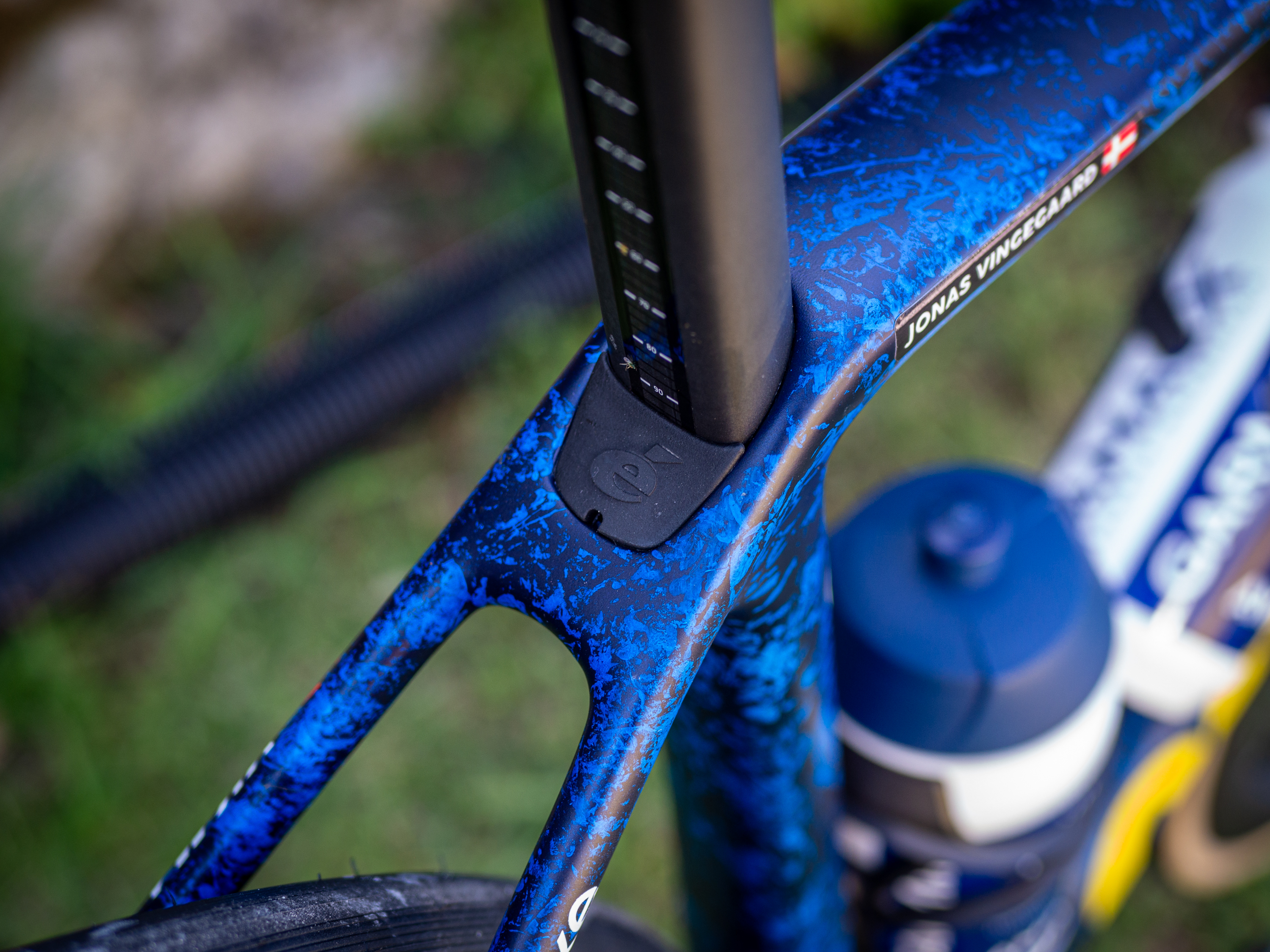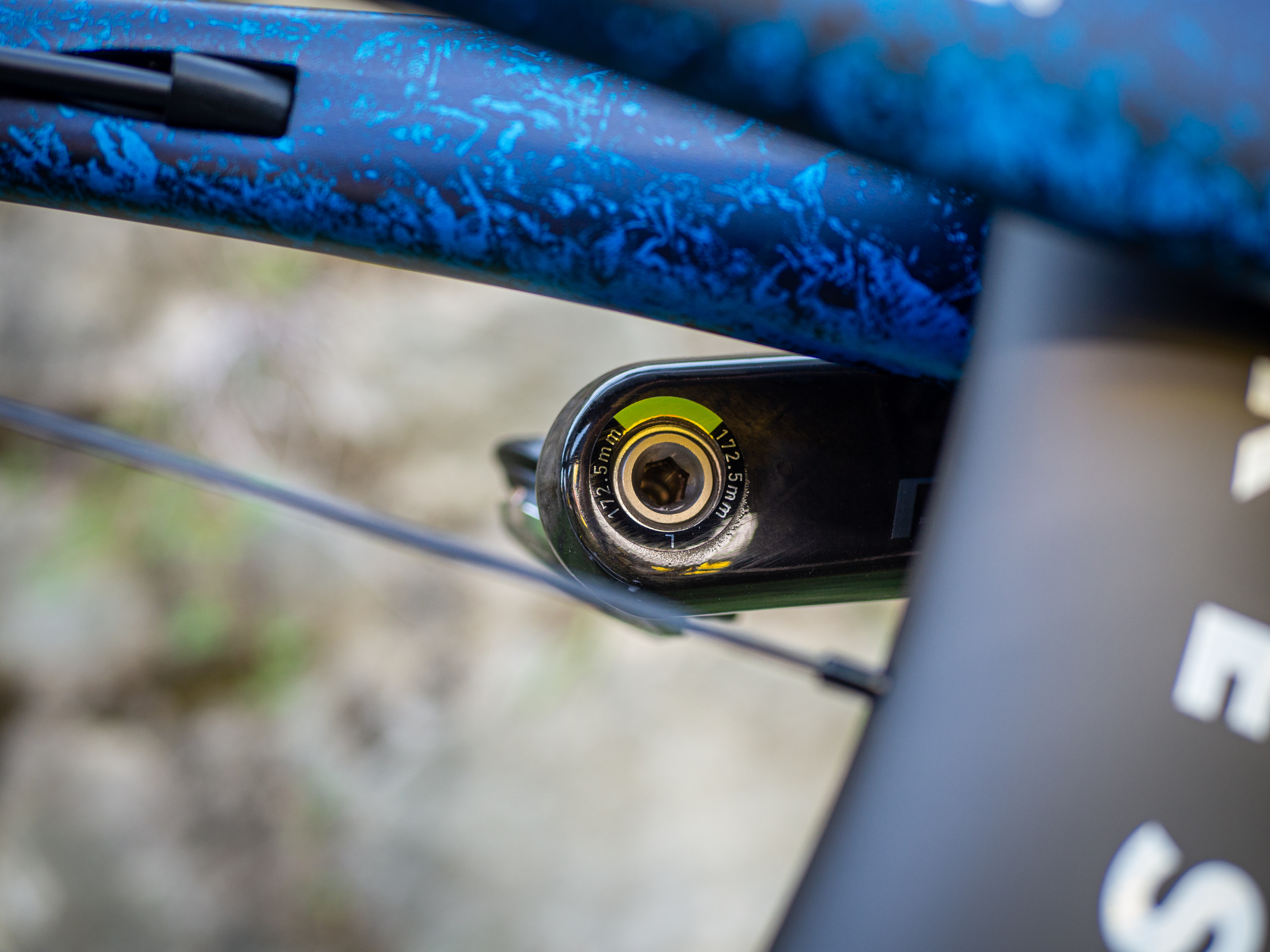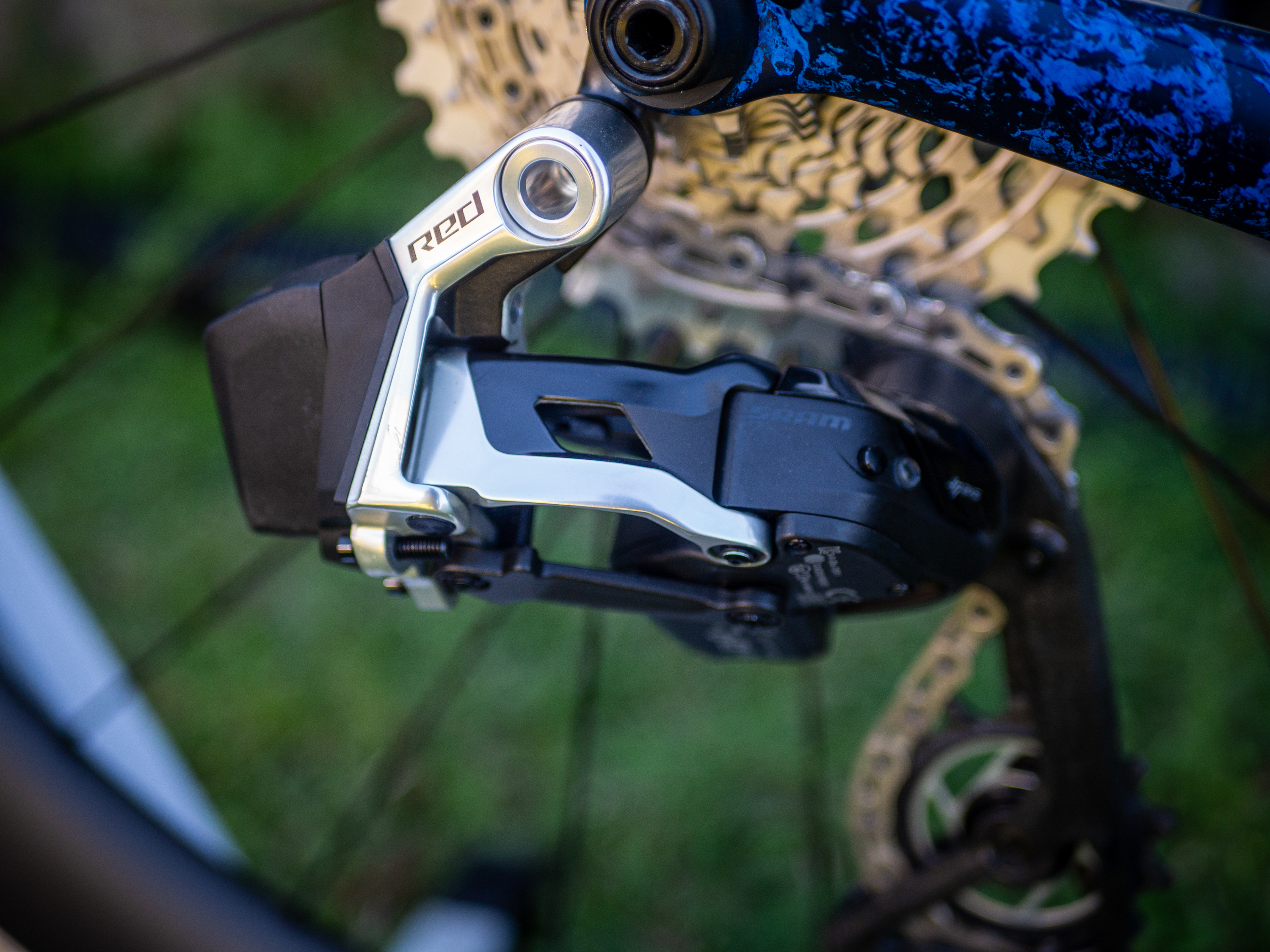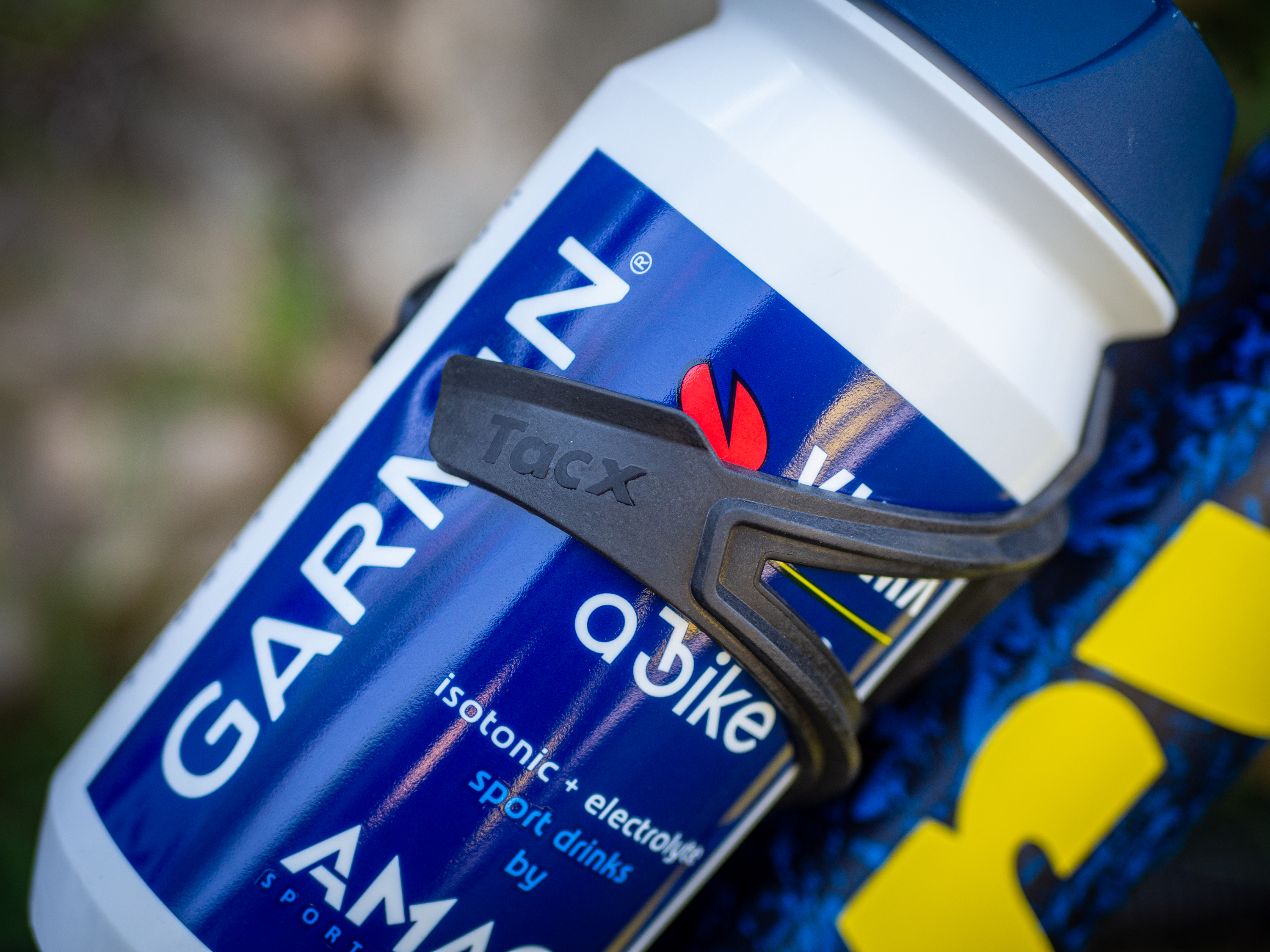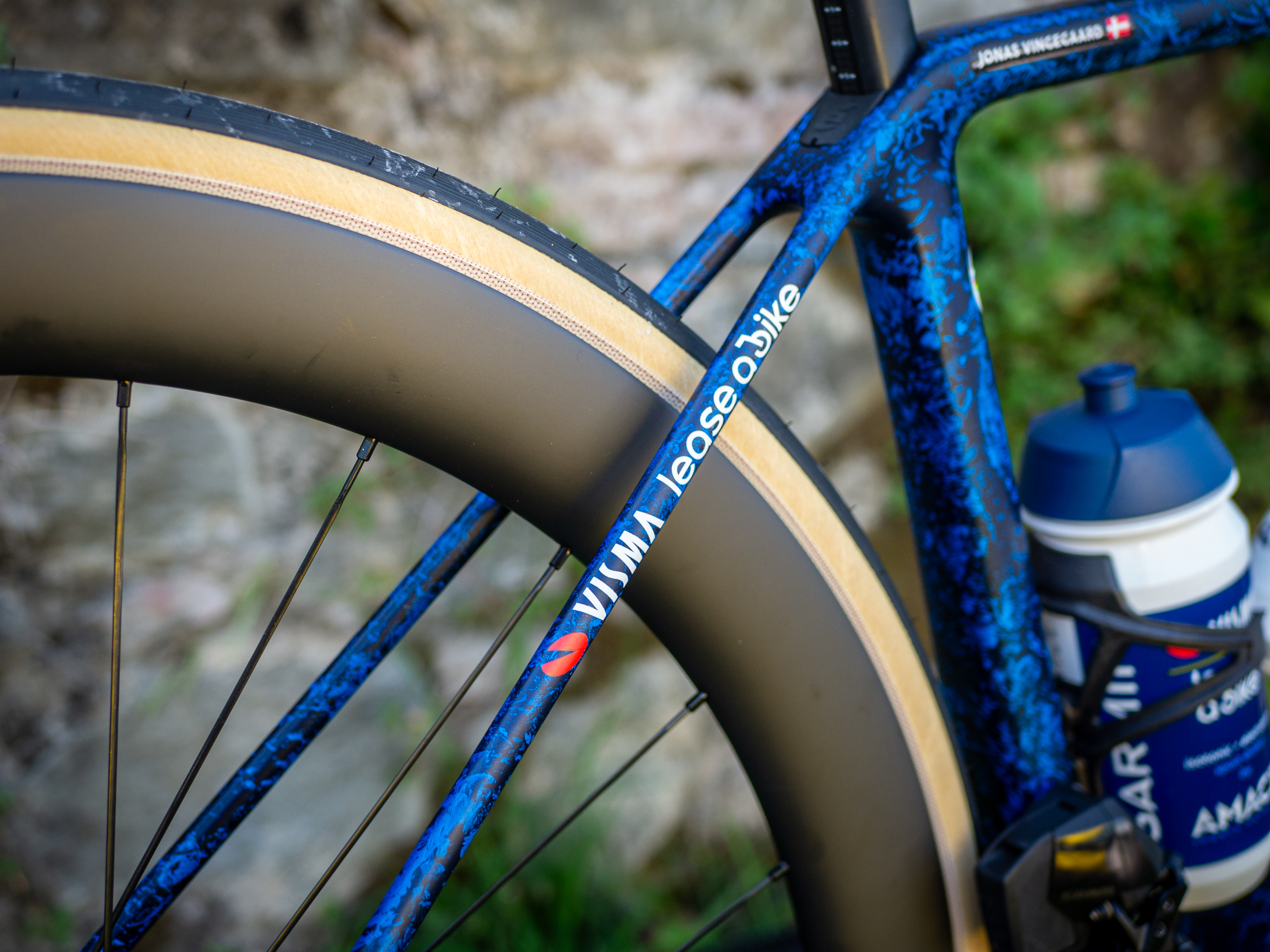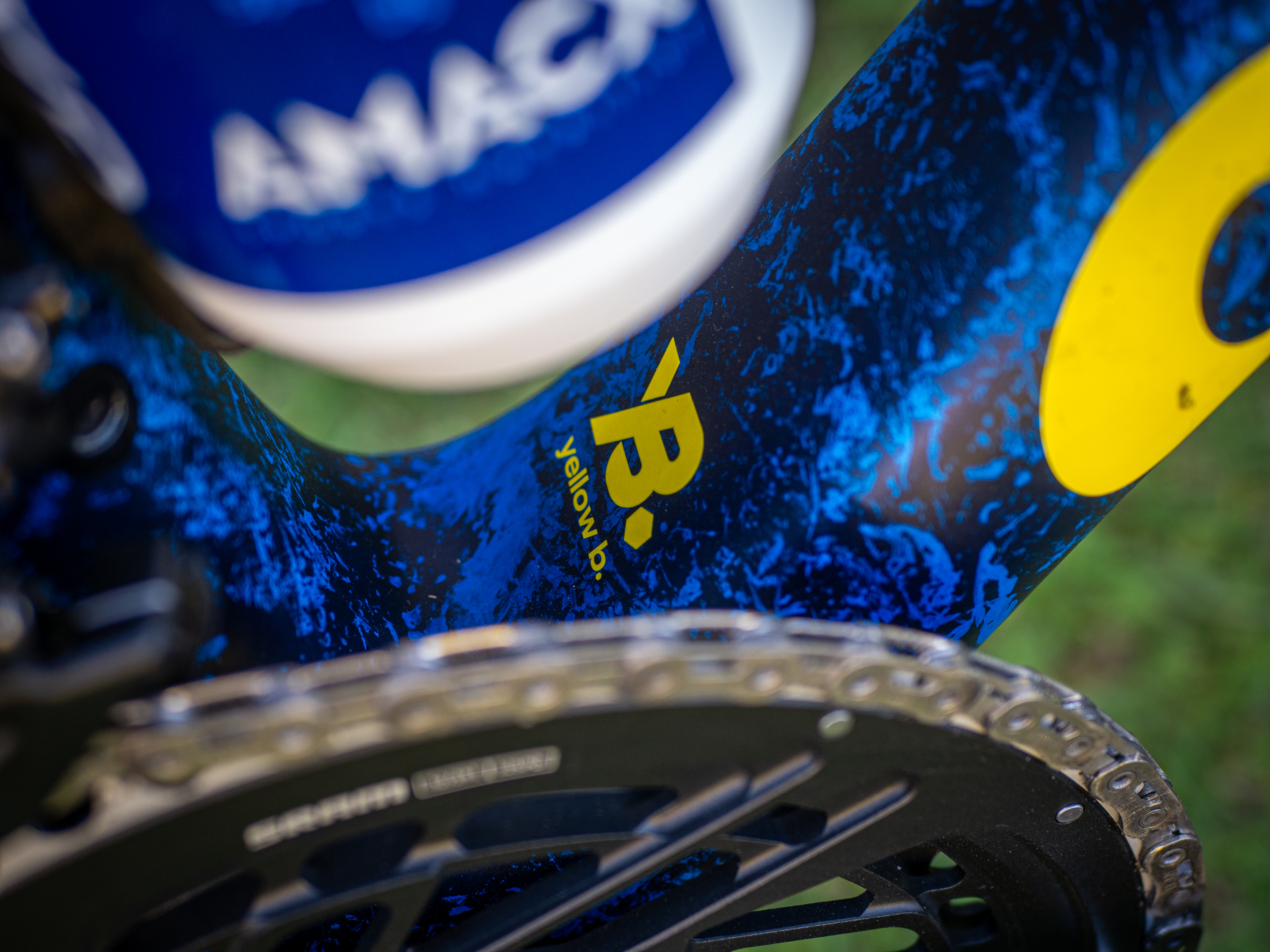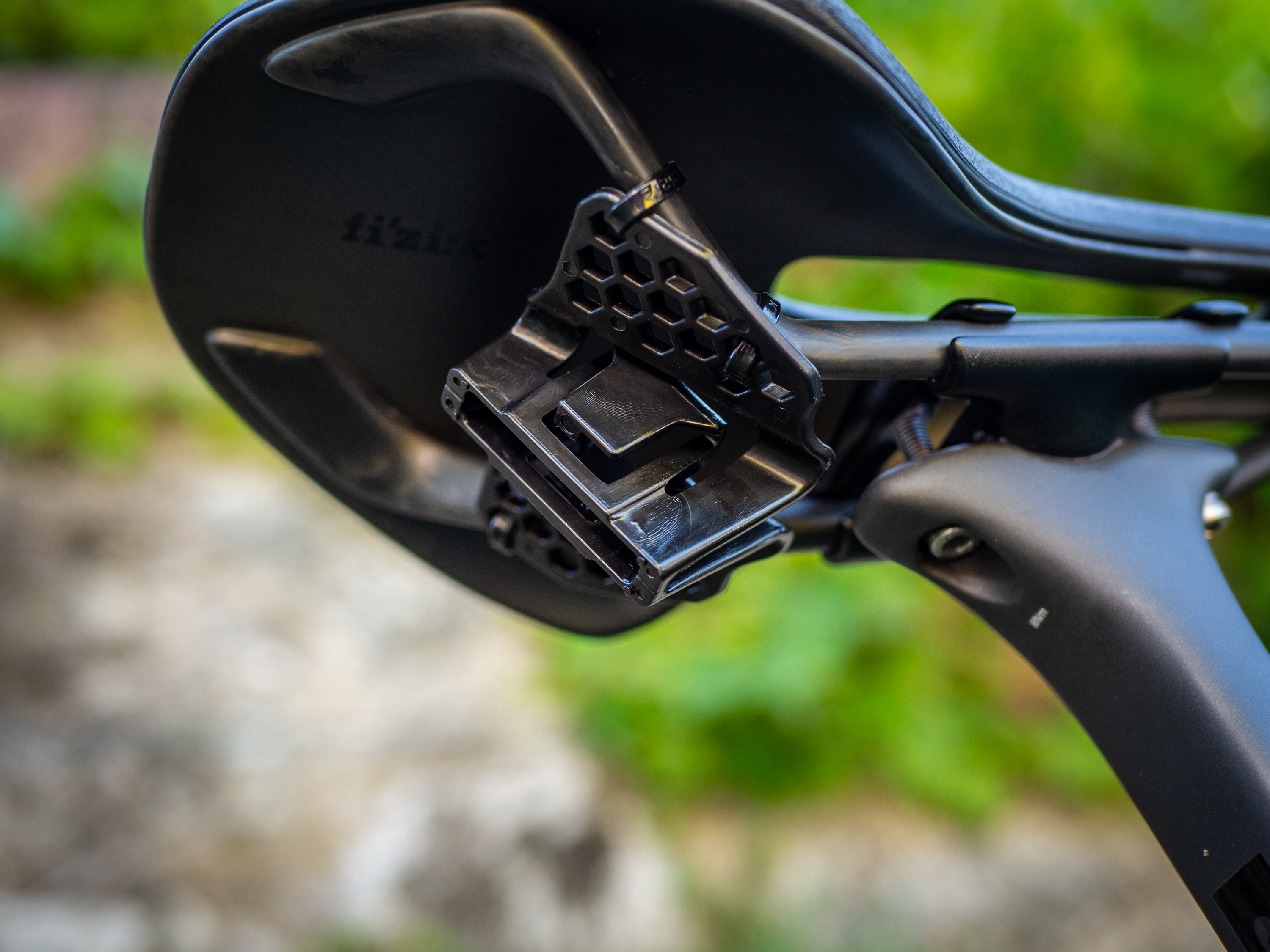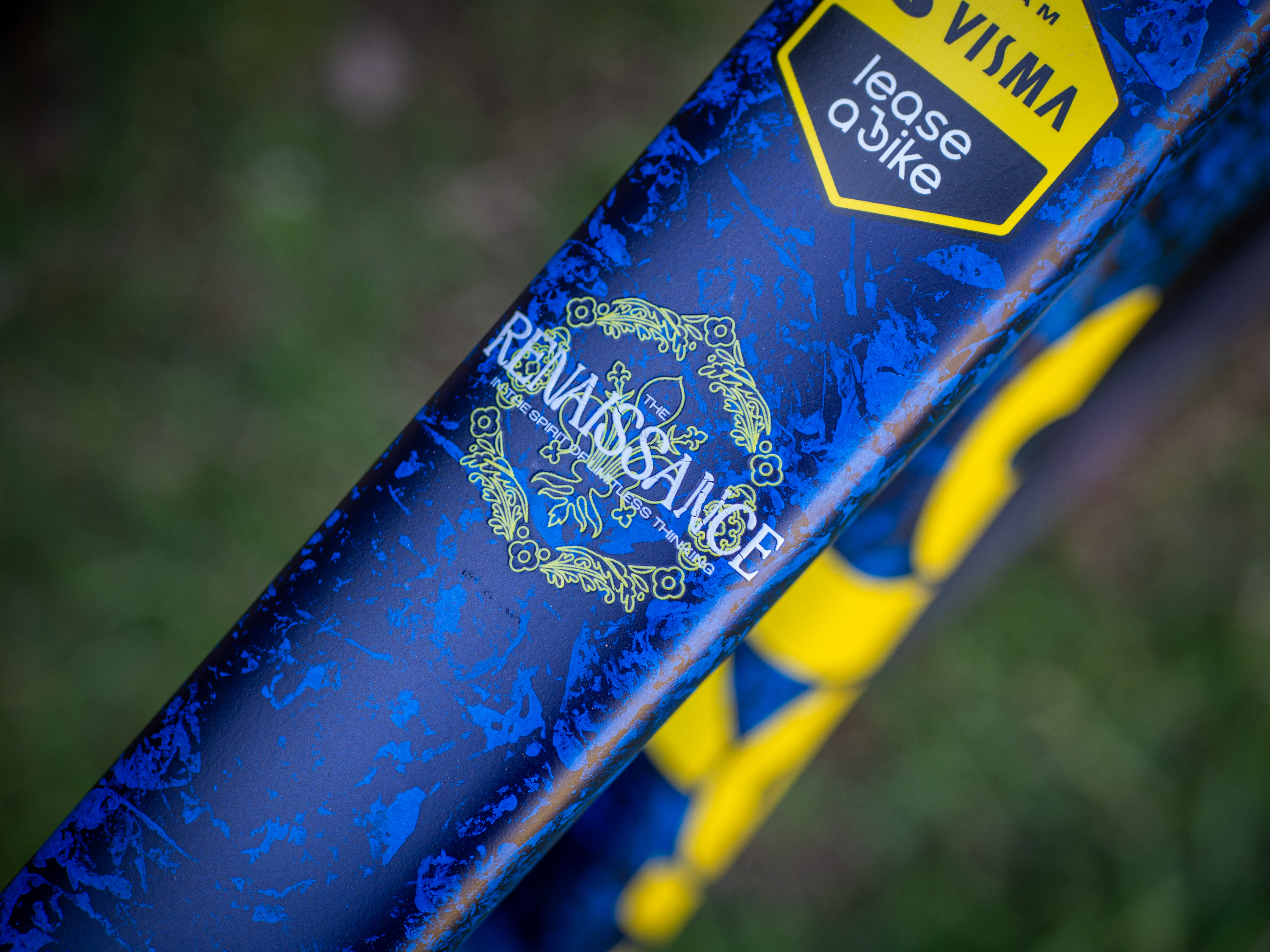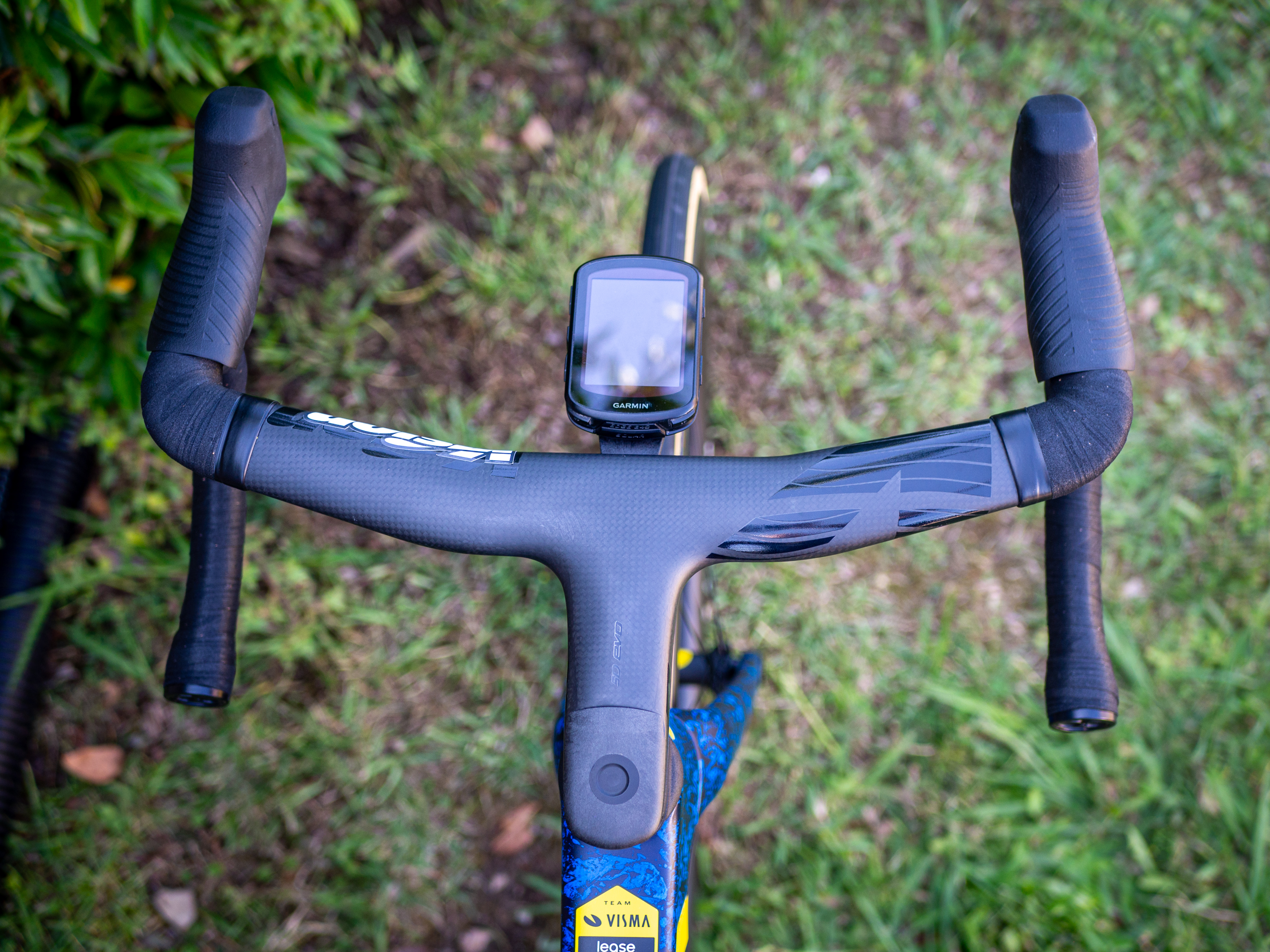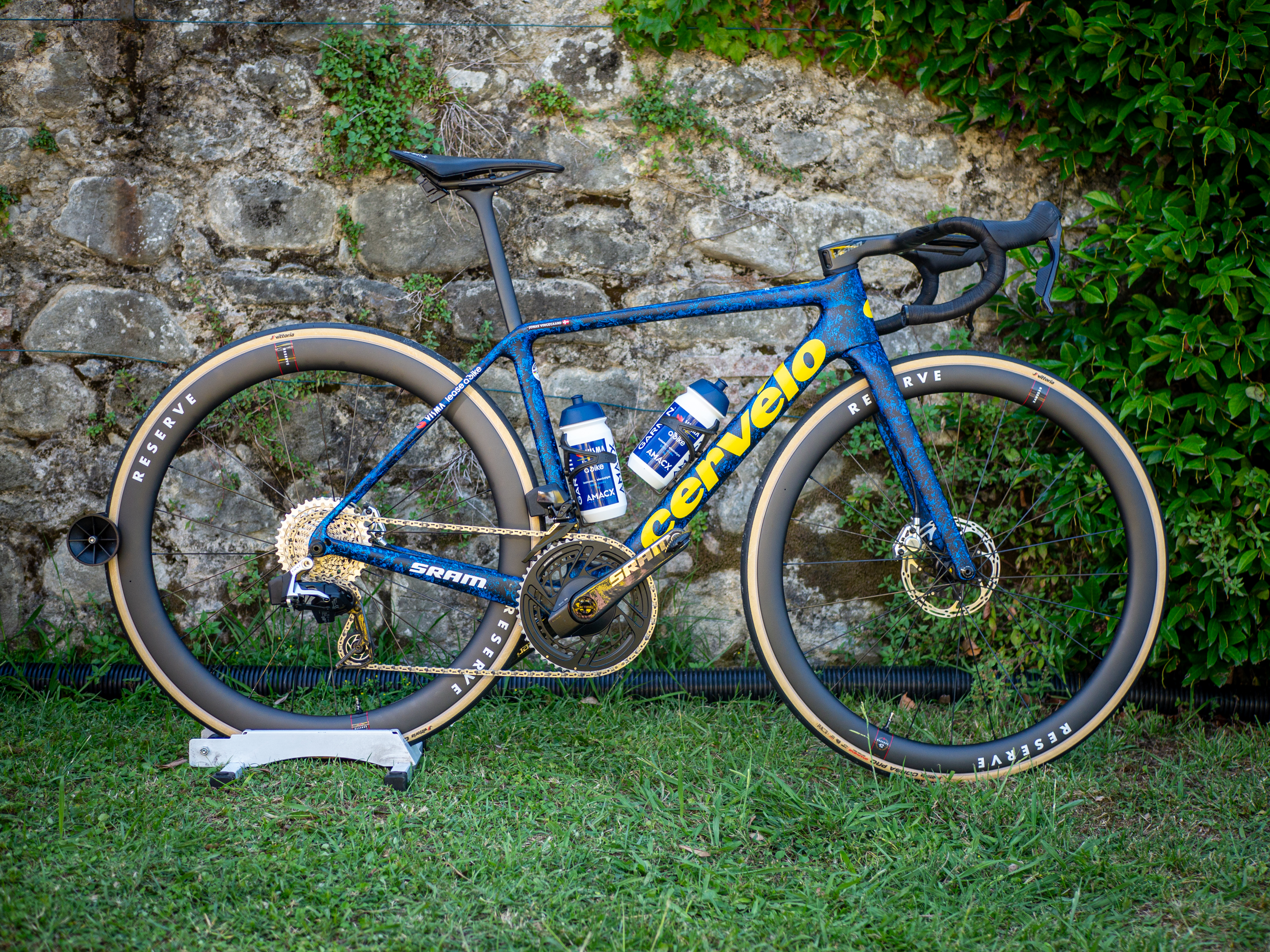
Jonas Vingegaard will be hoping to add a third consecutive Tour de France victory to his palmares this July. After suffering a horror crash earlier in the year at Itzulia Basque Country that saw him suffer a punctured lung, fractured ribs and a broken collar bone defending his title is going to be no mean feat.
Vingegaard has the choice of three bikes for road stages from team bike sponsor Cervélo with the S5 aero bike, the R5 lightweight bike and the Soloist which is something of an allrounder. At the Tour de France, we can expect to see Vingegaard switching between the R5 and S5 depending on the profile of the stage.
The R5 is a quintessential lightweight climbing bike, Vingegaard’s bike tips the scales at just 6.7kg. When the mandatory race transponder is added the bike comes in bang on the nose at the UCI’s minimum weight limit of 6.8kg making it one of the lightest bikes in the peloton.
As a team sponsored by American component brand Sram, Visma-Lease a Bike is one of the few teams that has access to a specific one-by groupset. Sram Red AXS can be run with either a single or a double chainring chainset. Vingegaard is clearly a fan of the single-ring option having used it on the testing mountain test of stage four that took the race over the Col du Galibier.
For a team that spends the majority of the season racing in yellow, the Tour de France is the exception. The team has switched to a bespoke kit that features far less yellow so they don't clash with the Maillot Jaune or yellow race leaders jersey. As a result, the bikes for this 2024 edition of the Grand Boucle feature a unique ‘renaissance’ colourway which was said to take inspiration from the renaissance period.
